Prepare for your camping adventures by mastering knife maintenance and care. Our tips will help you keep your knives reliable and safe in the wilderness.
Table of Contents
- Introduction:
- Cleaning and Storing Camping Knives
- Sharpening and Honing Camping Knives
- Lubrication and Rust Prevention
- Dealing with Wear and Tear
- Common Signs of Wear and Tear on Camping Knives can include:
- How to Restore Camping Knives if they become Damaged
- Appropriate to Seek Professional Assistance
- Importance of Handling Camping Knives Safely
- To Prevent Accidents and Injuries when Handling Camping Knives, Follow these Essential Safety Tips:
- Conclusion:
Introduction:
Maintaining and caring for camping knives is crucial for several reasons.
Firstly, regular maintenance ensures that your camping knives remain in optimal working condition, allowing you to rely on them when needed.
Secondly, proper care extends the lifespan of your knives, saving you money in the long run by reducing the need for frequent replacements.
Furthermore, maintaining your blades helps preserve their sharpness, ensuring efficient and effective cutting, which is essential for various camping tasks such as preparing food, cutting ropes, or even building shelters.
Taking care of your camping knives also helps prevent rust and corrosion, which can damage the blade and compromise its functionality.
Lastly, maintaining and caring for your knives ensures your own safety and the safety of those around you. A well-maintained knife reduces the risk of accidents and injuries that can occur due to dull blades or poor knife condition.
By regularly cleaning, sharpening, lubricating, and properly storing your camping knives, you can maximize their performance, durability, and safety, making them reliable tools for all your camping adventures.
Properly Maintaining Camping Knives Offers Several Key Benefits:
- Enhanced Performance: Regular maintenance ensures that the knives perform at their best. By keeping the blade sharp and free from rust or debris, you can rely on your knife for precise and efficient cutting during camping activities.
- Extended Lifespan: Taking care of your camping knives increases their longevity. Proper maintenance helps prevent wear and tear, minimizing the need for frequent replacements and saving you money in the long run.
- Improved Safety: A well-maintained camping knife reduces the risk of accidents. Sharp blades allow for controlled cutting, reducing the chance of slips and mishaps. Additionally, regular inspections help identify any potential issues that might compromise safety.
- Cost Savings: By properly maintaining your camping knives, you can avoid unnecessary expenses. Regular cleaning and lubrication reduce the likelihood of corrosion, protecting your investment and saving you from having to replace knives damaged by neglect.
- Reliable Cutting Power: Whether you’re preparing meals or handling campsite tasks, properly maintained knives deliver consistent cutting power. A sharp blade that’s free from nicks or chips ensures efficient and effortless cutting, making your camping experience more enjoyable.
- Versatility: Camping knives are versatile tools that can be used for various tasks. When maintained properly, they remain versatile and adaptable, serving multiple purposes such as chopping firewood, opening cans, or repairing equipment.
- Personal Connection: Properly maintaining your camping knives fosters a sense of attachment and pride. When you invest time and effort into caring for your tools, you develop a deeper connection with them, enhancing your overall camping experience.
By prioritizing the maintenance of your camping knives, you can enjoy these benefits, ensuring that your tools are always ready for any outdoor adventure.
Different Types of Camping Knives
Each designed for specific uses in the outdoors:
- Fixed Blade Knives: Fixed blade knives have a solid, non-folding design. They are versatile and rugged, suitable for heavy-duty tasks like chopping wood, preparing food, and building shelters. Their strength and durability make them ideal for survival situations.
- Folding Knives: Folding knives have a hinge that allows the blade to fold into the handle. They are compact and convenient to carry, making them popular among campers. Folding knives are versatile, suitable for tasks such as cutting rope, opening packages, and performing light to medium-duty tasks.
- Multi-Tool Knives: Multi-tool knives are equipped with additional tools like pliers, screwdrivers, can openers, and more, in addition to the knife blade. They offer versatility and functionality for various camping needs, from repairs to everyday tasks.
- Bushcraft Knives: Bushcraft knives are designed specifically for wilderness survival and bushcraft skills. They generally have a fixed blade with a sturdy construction and a sharp edge for tasks like carving, whittling, and creating bushcrafting tools and objects.
- Tactical Knives: Tactical knives are designed for self-defense and military-style applications. They generally have a fixed blade and include features like serrated edges, ergonomic handles, and non-reflective coatings. While they can be used for camping, their primary focus is on combat and utility in challenging environments.
- Hunting Knives: Hunting knives have a specific focus on field dressing, skinning, and processing game. They typically have a curved blade for precision cuts and sturdy construction to handle the demands of hunting and outdoor activities.
- Fillet Knives: Fillet knives are specialized tools for cleaning and filleting fish. They have thin, flexible blades that allow for delicate and precise cuts to remove skin and bones.
- Kitchen Knives: While primarily used in kitchen setting, certain kitchen knives such as chef’s knives or utility knives can be useful for camping. They excel in tasks like slicing, dicing, and chopping food ingredients, making them handy for meal preparation at the campsite.
- Pocket Knives: Pocket knives are compact folding knives that are easy to carry in your pocket or backpack. They are versatile tools that come in various sizes and designs, making them suitable for a range of camping, including cutting rope, opening packages, and performing general utility tasks.
- Lightweight Knives: Lightweight knives are designed with portability in mind. They are usually made from lightweight materials like titanium or carbon fiber, making them ideal for backpackers or those looking to minimize their gear weight while still having a reliable cutting tool.
- Serrated Knives: Serrated knives feature a blade with small, jagged teeth along the cutting edge. They excel in tasks that require sawing or cutting through tough materials like rope, fabric, or thick vegetation. Serrated knives are valuable when camping in environments with dense foliage or for general utility purposes.
- Dive Knives: Dive knives are specially designed for underwater use and are popular among divers and snorkelers. These knives typically have a stainless steel or titanium blade and may include features like a blunt tip for prying, a serrated edge for cutting rope, and a sheath that can be attached to a diving gear.
By considering these additional types of camping knives, you can choose the most appropriate knife for your specific camping needs and ensure that you have the right tool for various tasks during your outdoor adventures.
Common Materials Used in Knife Construction
- Stainless Steel: stainless steel blades are widely favored because of their ability to resist corrosion. They are easy to maintain, requiring regular cleaning to prevent buildup and occasional lubrication to keep them in optimal condition.
- Carbon Steel: Carbon steel blades offer excellent sharpness but are prone to corrosion. They require more diligent maintenance, including thorough cleaning, drying, and occasional oiling to prevent rust.
- High-Carbon Stainless Steel: High-carbon stainless steel combines the durability of stainless steel with the sharpness of carbon steel. They require regular cleaning and occasional lubrication to maintain their performance and prevent corrosion.
- Damascus Steel: Damascus steel is renowned for its unique patterns and exceptional strength. It needs special care to prevent staining and oxidation. Regular cleaning, thorough drying, and a protective oil layer are necessary to preserve its appearance and performance.
- Ceramic: Ceramic blades are incredibly hard and retain sharpness for a long time. They do not rust but can chip or break if mishandled. Ceramic blades require gentle washing and air drying to keep them clean and functional.
Proper maintenance of knife blades, regardless of the material, includes storing them in a dry environment, avoiding exposure to harsh chemicals or acids, and regularly inspecting and cleaning the blades to prevent issues.
Understanding the materials used in knife construction and their specific maintenance needs allows you to effectively care for your knives, ensuring their longevity and optimal performance.
Cleaning and Storing Camping Knives
Regular cleaning is crucial to prevent rust and corrosion in camping.
When camping, knives can come into contact with dirt, moisture, food particles, and other contaminants. If left unattended, these substances can cause the blade to corrode and develop rust spots over time.
Cleaning the knives after each use removes these contaminants and helps maintain their integrity. It is advised to rinse the blades with clean water and use a mild soap or detergent to remove any remaining debris or residue.
After cleaning, thorough drying is essential. Moisture left on the blade can create a favorable environment for rust to develop. It is recommended to dry the blade completely using a clean towel or cloth.
Additionally, applying a thin layer of oil or lubricant to the blade after cleaning helps protect against moisture and reduces the chances of corrosion. This is particularly important for knives with carbon steel or high-carbon stainless steel blades, as they are more prone to rust.
Proper storage of camping knives is another important factor in preventing rust and corrosion. Knives should be stored in a dry environment away from moisture, humidity, and extreme temperature fluctuations.
Using a sheath, blade cover, or knife roll can provide additional protection and minimize exposure to air and moisture. It is important to ensure that the blades are completely dry before storing them to prevent any moisture from being trapped.
By regularly cleaning and storing camping knives properly, you can effectively prevent rust and corrosion, ensuring that your knives remain in optimal condition for your camping adventures.
How to Properly Clean Camping Knives:
- Gather your cleaning supplies: You will need clean water, mild soap or detergent, a soft-bristle brush or sponge, a clean towel or cloth, and a lubricant or oil suitable for knives.
- Begin by rinsing the knife: Hold the knife under running water to remove any loose dirt or debris.
- Apply a small amount of mild soap or detergent: Use a soft-bristle brush or sponge to gently scrub the blade, handle, and any other metal parts. Pay attention to any stubborn stains or residue.
- Rinse the knife thoroughly: Make sure to rinse off all the soap or detergent until the water runs clear. This step is essential to remove any cleaning agents that could potentially harm the knife.
- Dry the knife completely: Use a clean towel or cloth to thoroughly dry the blade, handle, and other metal parts. Ensure there is no moisture left on the knife as this can lead to rust and corrosion.
- Lubricate the blade: Apply a small amount of lubricant or oil suitable for knives to the blade. Use a clean cloth or your fingers to spread a thin, even layer on the entire blade surface. This will help protect against moisture and prevent rust.
- Store the knife properly: Once the knife is dry and lubricated, store it in a dry environment away from moisture and extreme temperature fluctuations. Consider using a sheath, blade cover, or knife roll for added protection.
Remember to follow any specific cleaning and maintenance instructions provided by the manufacturer, as different knife materials may have specific requirements.
Regular cleaning and maintenance will help keep your camping knives in optimal condition and extend their lifespan.
The Best Practices for Storing Camping Knives to Maintain their Sharpness
Storing camping knives properly is vital for maintaining their sharpness. Here are some best practices I recommend:
- Clean and dry the knives before storing: Before putting away your camping knives, ensure they are clean and dry. Any leftover moisture, dirt, or residue can promote corrosion and dull the blade edge over time.
- Store knives in a dry and controlled environment: Moisture is the enemy of sharp blades. Choose a storage location that is dry, well-ventilated, and away from sources of humidity. Avoid storing knives in areas prone to condensation or high humidity, such as basements or near dishwashers.
- Consider using a knife sheath or blade cover: Sheaths or blade covers provide a protective barrier, preventing the blade from coming into contact with other objects that could potentially nick or dull the edge. Opt for a sheath made of non-corrosive materials like plastic or leather.
- Use a knife block or magnetic strip: If storing multiple knives, consider using a knife block or magnetic strip designed for this purpose. These options keep knives organized, secure, and safely separated, reducing the risk of accidental contact that could damage the blade edge.
- Keep knives out of reach of children: Store knives in a secure location that is out of reach of children. This helps prevent accidents and ensures the longevity of your knives.
- Avoid storing knives loose in a drawer: Storing knives loosely in a drawer can lead to blades coming into contact with other utensils, causing nicks or dulling the edge. If drawer storage is necessary, use blade guards or knife sleeves to provide individual protection.
- Regularly inspect the knives: Periodically check stored knives for any signs of rust, damage, or dullness. If any issues are detected, address them promptly to prevent further damage or loss of sharpness.
By following these best practices for storing camping knives, you can maintain their sharpness, prolong their lifespan, and ensure they are always ready for your outdoor adventures.
Sharpening and Honing Camping Knives
Sharpening and honing are two distinct processes related to maintaining the edge of camping knives:
Sharpening Knives
Sharpening a blade entails the removal of material to form a fresh and sharp edge.
It is necessary when a knife becomes dull or loses its cutting ability due to wear or damage.
Sharpening is achieved by using abrasive tools, such as sharpening stones, diamond sharpeners, or electric sharpeners, to grind or remove metal from the blade. This process restores the blade’s sharpness by creating a new beveled edge.
Honing Knives
Honing is the process of realigning the blade’s edge to optimize its cutting performance.
Honing does not remove metal from the blade but rather corrects any misalignment or minor imperfections that can occur during regular use.
Honing is typically done using a honing rod or a honing guide. By gently stroking the blade against the honing tool at the proper angle, the microscopic edge is straightened, improving the knife’s cutting ability without actually sharpening it.
Sharpening is more comprehensive and involves removing metal to create a new edge. Honing is a maintenance step that helps maintain the existing edge by realigning and refining it.
Both sharpening and honing play important roles in keeping camping knives in optimal cutting condition. Sharpening is done less frequently, depending on the level of use and the condition of the blade, while honing can be performed more regularly to maintain the knife’s sharpness in-between sharpening sessions.
Best Sharpening tools and Techniques for Camping Knives
- Sharpening Tools: Consider using sharpening stones, diamond sharpeners, or electric sharpeners. Sharpening stones, available in different grits, offer versatility and control. Diamond sharpeners are durable and effective for various blade materials. Electric sharpeners can provide efficient and consistent results with minimal effort.
- Select the Appropriate Angle: Determine the correct angle for sharpening your specific knife. Most camping knives have a bevel angle between 20 to 25 degrees. Check the manufacturer’s recommendations or use the existing bevel as a reference.
- Lubricate the Stone: If using sharpening stones, use water or honing oil to lubricate the stone’s surface. This lubrication helps with the sharpening process and prevents the blade from overheating.
- Maintain Consistent Pressure: Apply even and consistent pressure on the blade when sharpening. Avoid using excessive force as it can cause uneven sharpening or damage the blade.
- Use Proper Technique: When using sharpening stones, employ a steady and controlled motion. Move the blade in a back-and-forth or circular motion, ensuring that the entire blade length receives equal attention.
- Test for Sharpness: After sharpening, carefully test the blade’s sharpness by gently running it across a piece of paper or attempting a small cutting task. If the blade cuts smoothly and easily, the sharpening process was successful.
- Honing as Maintenance: Consider honing the blade regularly to maintain its sharpness between sharpening sessions. Use a honing rod or honing guide to realign the edge without removing metal.
Remember, practice and patience are key when sharpening camping knives.
If unsure, seek guidance from professionals or refer to instructional videos or manuals specific to your chosen sharpening tools. Proper sharpening ensures that your camping knives stay sharp and ready for your outdoor adventures.
Importance of Regularly Honing Camping Knives to Maintain their Edge
Regularly honing camping knives is important for maintaining their edge.
Honing helps to realign the microscopic edge of the blade, which can become misaligned through regular use.
By using a honing rod or honing guide, the blade’s edge is gently straightened, optimizing its cutting performance.
Honing does not remove any significant amount of metal from the blade, but rather corrects minor imperfections.
Regular honing helps to prolong the sharpness of the knife, reducing the need for more frequent sharpening.
It is recommended to hone camping knives before or after each use, or whenever the blade starts to feel dull.
Honing is a quick and simple maintenance step that can be done in just a few moments.
By incorporating regular honing into your knife care routine, you can keep your camping knives sharp and ready for their intended purposes.
Lubrication and Rust Prevention
Role of Lubrication in Maintaining Camping Knives
Lubrication plays a crucial role maintaining camping knives.
Applying lubrication to the blade helps to prevent rust and corrosion, especially for knives with carbon steel or high-carbon stainless steel blades.
Lubrication forms a protective barrier that inhibits moisture from coming into contact with the blade, reducing the risk of oxidation.
By reducing friction between moving parts, lubrication helps promote smooth opening and closing of folding knives.
Lubrication also prevents the accumulation of dirt, debris, and other contaminants on the blade, making it easier to clean and maintain the knife.
Using a suitable lubricant, such as mineral oil or specialized knife oil, helps to extend the lifespan and performance of camping knives.
Apply a small amount of lubricant to the blade regularly, ensuring a thin, even coating for optimal protection.
Regular lubrication is particularly important for folding knives with pivot points and mechanisms that require smooth operation.
Proper lubrication, combined with regular cleaning and maintenance, contributes to the overall longevity and functionality of camping knives.
Different Lubrication Options Suitable for Camping Knives
- Mineral Oil: Mineral oil is a commonly used lubricant for knives. It is affordable, readily available, and helps prevent rust and corrosion. Apply a small amount to the blade, distributing it evenly for effective protection.
- Knife Oil: Specialized knife oils, such as Tuf-Glide, Nano-Oil, or Ballistol, are designed specifically for lubricating knives. These oils offer superior rust and corrosion protection and can withstand harsh conditions. Follow the manufacturer’s instructions for proper application.
- Food-Grade Lubricants: Food-grade lubricants, like food-grade mineral oil or silicone-based lubricants, are safe for use on camping knives that may come into contact with food. These lubricants are non-toxic and offer protection against moisture and rust.
- PTFE (Polytetrafluoroethylene) Spray: PTFE sprays, commonly known as Teflon sprays, provide a dry, non-stick lubrication. They create a protective film that reduces friction and repels dirt and moisture. Use in well-ventilated areas and follow the spray instructions carefully.
- Wax-Based Lubricants: Wax-based lubricants, such as Renaissance Wax or traditional beeswax, can be applied to the blade for protection against rust and corrosion. These lubricants create a barrier that helps repel moisture and contaminants.
Consider selecting a lubricant that suits your specific needs, based on factors like the environment, knife materials, and intended use. Remember to apply lubrication sparingly and evenly, wiping off any excess after application.
Regular lubrication of camping knives helps to maintain their performance and protect them from moisture and corrosion.
How to Prevent Rust and Corrosion on Camping Knives
Preventing rust and corrosion on camping knives is essential for maintaining their lifespan. Here are some tips to help you in this regard:
- Keep knives clean and dry: After each use, be sure to clean your camping knives thoroughly with mild soap and water. Dry them completely with a clean cloth to remove any moisture that could lead to corrosion.
- Apply a protective coating: Consider applying a thin layer of protective coating, such as a lubricant or oil suitable for knives. This keeps out moisture and stops rust from forming. Apply the coating evenly, wiping off any excess.
- Store knives properly: Choose a dry and controlled environment for storing your camping knives. Keep them away moisture-prone areas, such as basements or near sinks. Consider using a she, blade cover, or knife roll to provide additional protection.
- Avoid exposure to harsh elements: Minimize exposing your knives to extreme temperatures, excessive humidity, or saltwater environments. These elements can accelerate rust and corrosion. Rinse and dry knives promptly if they come into contact with saltwater.
- Regularly inspect knives: Periodically inspect your camping knives for signs of rust or corrosion. Pay attention to any areas that might be prone to moisture retention, such as handle joints or the base of the blade.
- Clean and lubricate folding mechanisms: If your camping knife has folding mechanisms, make sure to keep them clean and lubricated. Regularly clean out dirt or debris from the pivot points and apply a small amount of lubricant to ensure smooth operation and prevent rust.
- Use food-safe materials for food preparation: If using camping knives for food preparation, choose knives made from food-safe materials like stainless steel. Clean and dry them thoroughly after use to prevent potential contamination and rust from food residues.
By following these tips, you can help prevent rust and corrosion on your camping knives, ensuring they remain in optimal condition for your outdoor adventures.
Dealing with Wear and Tear
Common Signs of Wear and Tear on Camping Knives can include:
- Dullness: A dull blade is a clear sign of wear and tear. If your knife struggles to make clean cuts or requires excessive force, it may be time to sharpen the blade.
- Chipped or damaged edge: Visible chips or nicks in the blade edge are signs of damage. These imperfections can affect the knife’s cutting performance and should be addressed promptly.
- Corrosion or rust spots: Any visible signs of corrosion or rust on the blade indicate exposure to moisture or improper storage. Clean and treat the affected areas promptly to avoid additional damage.
- Loosening of folding mechanisms: If your camping knife has folding mechanisms, watch for any looseness or play in the pivot points. Excessive wobbling or lack of stability can indicate wear and tear on the mechanism.
- Handle damage: Inspect the handle for any cracks, chips, or loose grips. Damaged handles can compromise the knife’s functionality and should be repaired or replaced to maintain a secure and comfortable grip.
- Stiff opening or closing: Difficulty in opening or closing the knife smoothly can indicate wear and tear on the folding mechanism or hinge. Regular cleaning, lubrication, and maintenance can help prevent this issue.
- Wear on blade coating or finish: Some camping knives have coatings or finishes to protect against corrosion. If you notice significant wear or peeling of the coating or finish, it may be time to consider reapplying or refinishing it.
Regularly inspecting your camping knives for these signs of wear and tear allows you to address any issues promptly. Proper maintenance and timely repairs or replacements can help prolong the lifespan and performance of your camping knives.
How to Restore Camping Knives if they become Damaged
If your camping knife becomes damaged, consider the following guidance to restore it:
- Assess the damage: Inspect the knife to determine the extent of the damage. Identify any chips, nicks, or other issues that need to be addressed.
- Sharpen the blade: If the blade is dull or has chips, sharpen it using appropriate sharpening tools such as sharpening stones or diamond sharpeners. Follow the proper sharpening technique to restore a sharp edge.
- Smooth out nicks and chips: For minor nicks or chips, you can use a honing stone or fine sandpaper to gently smooth out the imperfections. Carefully work on the damaged area to restore a more even cutting surface.
- Repair handle damage: If the handle is cracked or damaged, consider repairing or replacing it. For minor cracks, you may be able to fill them in with epoxy or a suitable adhesive. In more severe cases, it may be necessary to replace the handle altogether.
- Address rust or corrosion: If there are signs of rust or corrosion on the blade, clean the affected areas with a gentle abrasive like steel wool or a non-abrasive cleaner. Apply a rust remover if necessary. Once clean, lubricate the blade and take measures to prevent future rust or corrosion.
- Lubricate folding mechanisms: If your camping knife has folding mechanisms that are stiff or not functioning properly, clean and lubricate them. Use an appropriate lubricant and work the mechanisms to ensure smooth opening and closing.
- Seek professional help if needed: For extensive damage or if you are unsure about the restoration process, it may be best to seek assistance from a professional knife repair service. They have the necessary expertise and tools to handle more complex repairs.
Remember, restoring a damaged camping knife might require some time and effort. Approach the restoration process with patience and care to ensure a successful repair.
Appropriate to Seek Professional Assistance
Seeking professional assistance your camping knife is appropriate the following circumstances:
- Ext damage: If your knife severe damage such as a broken blade, handle or folding mechanism, it best to consult a professional. They have the expertise to handle complex repairs and can help restore your knife to its optimal condition.
- Lack of experience or knowledge: If you are unsure about how to properly repair or restore your camping knife, seeking professional assistance is recommended. They can provide guidance, assess the damage accurately, and offer the appropriate solutions.
- Specialty knives or materials: If your camping knife has specialized features or unique materials, it is wise to consult a professional. They will have the experience and knowledge to work with specific knife types, exotic blade materials, or intricate mechanisms.
- Preservation of value: If your camping knife holds sentimental value or is an expensive collector’s item, it is advisable to seek professional assistance. They can ensure that any repairs or restorations are done carefully, preserving the knife’s value and authenticity.
- Time or convenience constraints: If you lack the time, tools, or resources to properly repair your camping knife, professional assistance can be convenient. They can efficiently handle the repairs, allowing you to focus on other aspects of your outdoor activities.
- Warranty or manufacturer guidelines: Checking the warranty or consulting the manufacturer’s guidelines can help determine if professional assistance is necessary. Some knives may require specific procedures or repairs that should be done by authorized professionals to avoid voiding the warranty.
When in doubt or facing challenging repair situations, it is best to rely on the expertise and assistance of professionals. They have the necessary skills and knowledge to assess and address the unique needs of your camping knife.
Importance of Handling Camping Knives Safely
Handling camping knives safely is of utmost importance. Here are some key reasons why:
- Prevent accidents: Proper handling reduces the risk of accidents, such as cuts or punctures. By following safety practices, you minimize the chance of injuring yourself or others during camping activities.
- Maintain control: Handling knives safely ensures that you have full control over the knife at all times. This allows for precise cutting and minimizes the risk of slipping or losing control of the blade.
- Protect others: Safe handling protects the well-being of those around you. By being mindful of how you handle your camping knife, you minimize the chance of accidentally injuring others who may be nearby.
- Preserve the knife’s condition: Proper handling helps maintain the knife’s condition and extends its lifespan. By avoiding unnecessary stress or misuse, you prevent damage to the blade, handle, or folding mechanisms.
- Promote responsible outdoor ethics: Handling knives safely sets a positive example for others. It shows that you prioritize safety and respect for nature, contributing to a culture of responsible outdoor practices.
- Ensure efficient performance: Safe handling enables you to use the knife efficiently and effectively. By holding the knife properly and using appropriate cutting techniques, you can achieve accurate results while minimizing the risk of mishaps.
- Develop good habits: Practicing safe knife handling fosters good habits that can transfer to other aspects of your life. These habits cultivate a sense of responsibility and conscientiousness in various situations involving tools or sharp objects.
Always prioritize safety when handling camping knives. Be aware of the blade’s position, use appropriate cutting techniques, and store the knife securely when not in use. By doing so, you can enjoy the benefits of a sharp and reliable knife while minimizing the potential risks associated with improper handling.
To Prevent Accidents and Injuries when Handling Camping Knives, Follow these Essential Safety Tips:
- Choose a suitable knife: Select a knife that is appropriate for your intended use. Consider factors like blade length, handle design, and locking mechanisms to ensure the knife suits your needs and abilities.
- Handle with care: Always handle a camping knife with care and respect. Treat it as a sharp and potentially dangerous tool, even when performing simple tasks. Avoid careless or reckless behavior that may lead to accidents.
- Maintain a safe grip: Hold the knife with a firm grip, ensuring all fingers are away from the blade’s edge. Avoid placing your fingers in front of or behind the blade, as this increases the risk of accidental cuts.
- Use proper cutting techniques: Learn and apply proper cutting techniques to minimize the risk of accidents. Keep your fingers and other body parts clear of the cutting path, using a controlled and deliberate motion.
- Work in a well-lit area: Always ensure you have adequate lighting when using a camping knife. Proper visibility helps you maintain control and avoid accidental slips or misjudgments.
- Keep a safe distance: Maintain a safe distance from others when using a knife to reduce the risk of unintended injuries. Avoid overcrowded or congested areas where accidental contact or mishaps are more likely to occur.
- Sheath or store the knife when not in use: When you are not actively using the knife, always sheath it or store it safely in a secure manner. This prevents accidental contact with the blade and minimizes the risk of injury.
- Avoid distractions: Concentrate fully on the task at hand when handling a knife. Avoid distractions that may compromise your focus and increase the chances of accidents.
- Educate yourself and others: Familiarize yourself and others with proper knife safety guidelines. Teach responsible knife handling practices to friends or family members who may also use camping knives.
- Regularly inspect and maintain the knife: Regularly inspect your camping knife for any signs of damage or wear. Keep the blade sharp, the folding mechanisms in good condition, and the handle secure. Taking care of maintenance properly improves performance and reduces the risk of accidents.
By following these safety tips, you can minimize the risk of accidents and injuries when handling camping knives. Always prioritize safety and exercise caution to enjoy a safe outdoor experience.
Conclusion:
In conclusion, maintaining and caring for your camping knives is crucial to ensure their longevity, performance, and safety. By following the proper maintenance and care tips discussed in this blog post, you can keep your knives in condition for your outdoor adventures.
Remember to regularly clean, lubric, and inspect your knives any signs of wear, damage, or rust. Sharpen the blades when needed and them properly in a dry and controlled environment Handle your knives with care, practicing safe techniques to prevent accidents and injuries.
By prioritizing maintenance and care, you can rely on your camping knives to perform reliably and serve you well during your camping trips, hiking excursions, or other outdoor activities.
Md Ismail Hossen
- is a Professional & Trusted Outdoor Authority, provides a valuable insights & tips on Products.

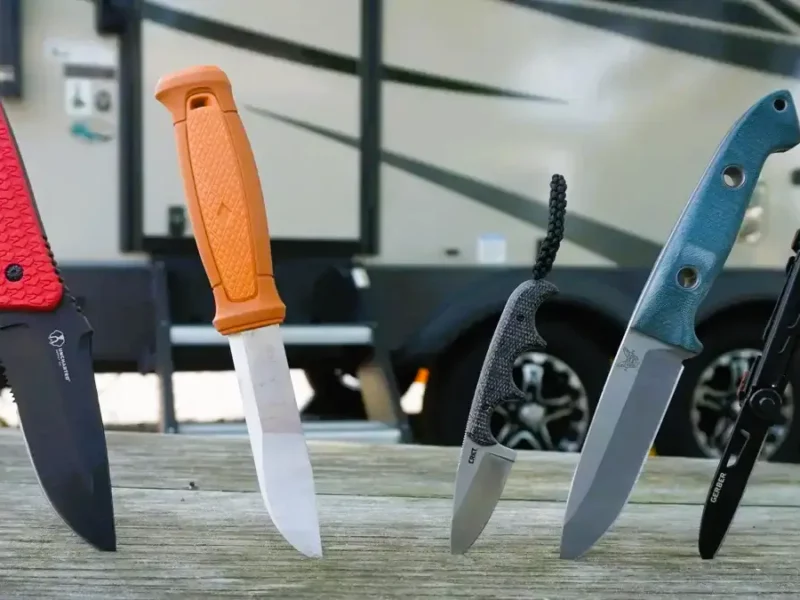

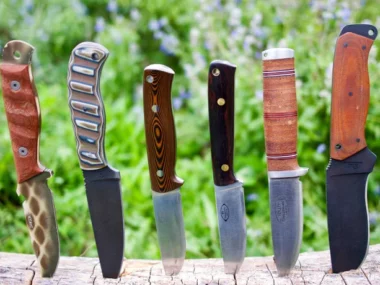
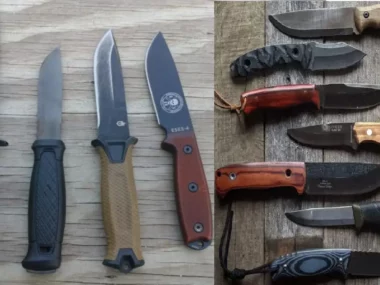
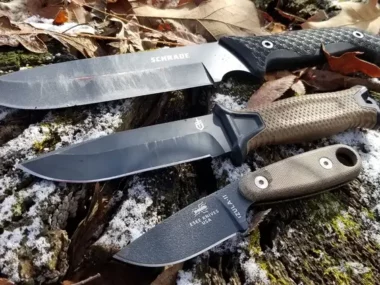

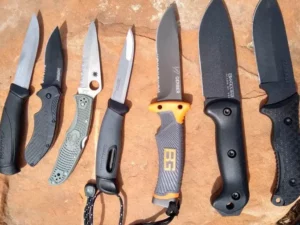
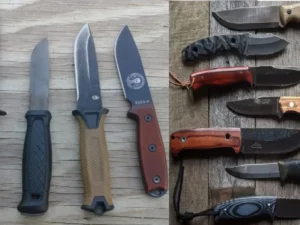
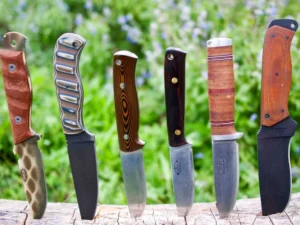
3 comments
Wow. Very Good Care tips on camping knives.
This tips are very helpful.
Thanks for your valuable caring tips for camping knives.
best safety & tips for camping knives.
Thanks to the author.